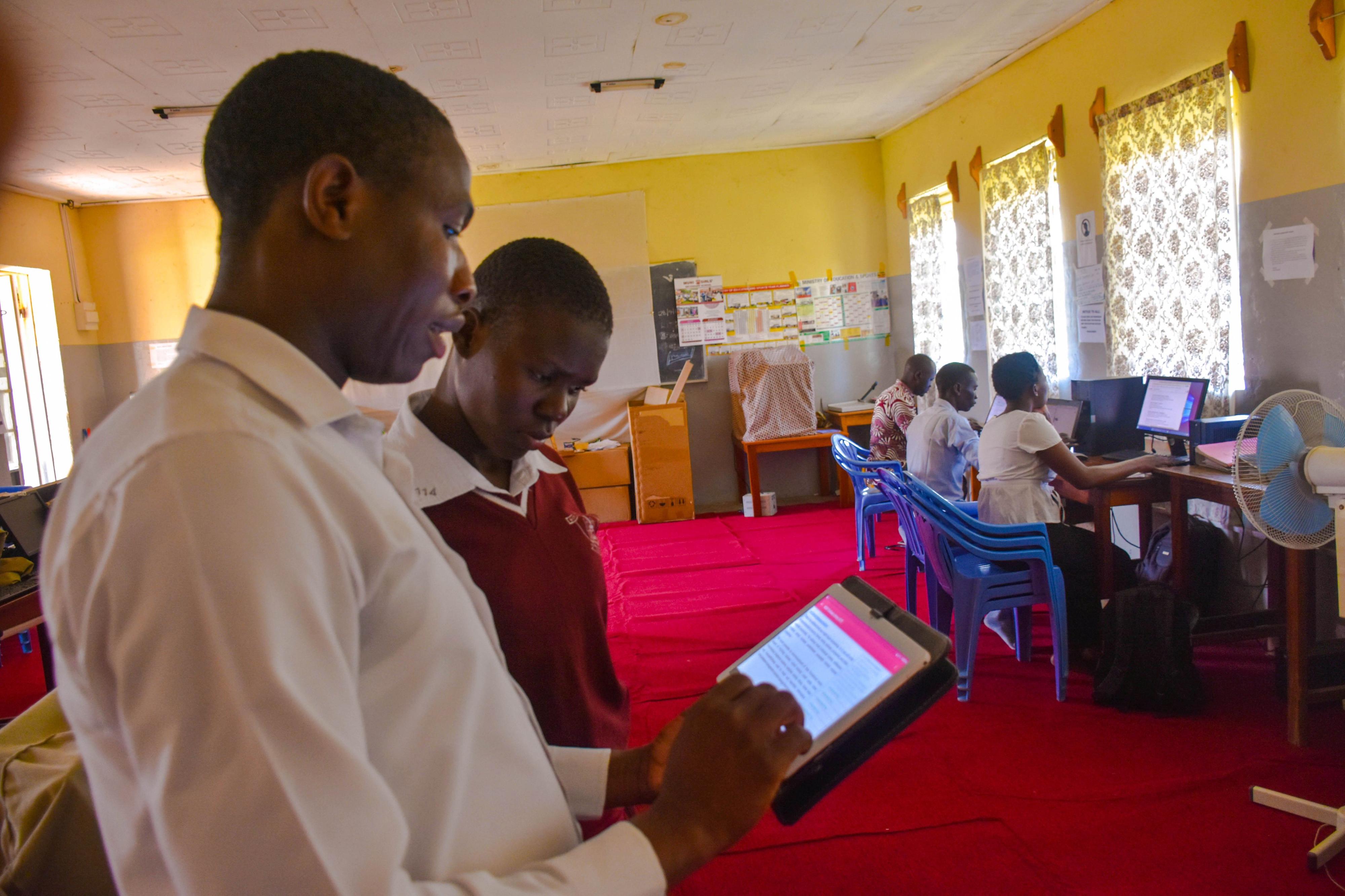Digitalisation must enable inclusive development as opposed to widening disparities
Friday April 22 2022

Teacher Training Education project by Enabel in Uganda (Enabel in Uganda Photo)
By Mohamed Kimbugwe
The role of digitalisation as an enabler for inclusive sustainable development cannot be overstated, and its significance is clearly pronounced in the sustainable development goals (SDGs) of Agenda 2030, both directly and indirectly.
Target 5.b for example, is clear on digitalisation as an enabler for the empowerment of women. Target 9.C connects digitalisation to industry, innovation, and infrastructure. Digitalisation is further emphasized under target 17.8 as an important enabler for the achievement of the sustainable development goals.
Two things are clear thus far. Foremost, it is evident that digitalisation is a gamechanger in all spheres of human endeavor. From climate change to education, economic development, health, work, hunger and poverty, digitalisation has a role to play.
Secondly and very important, digitalisation is crucial for the empowerment of marginalized groups. This is especially so because in principle, digitalisation is supposed to surpass traditional barriers that usually fuel marginalisation, and instead create room for diversity and inclusion.

Mohamed Kimbugwe, writer of this opinon
This being the ideal situation, can we confidently say that in reality, digitalisation has actually led to the empowerment of marginalised people and contributed towards the narrowing of disparities? To answer this question, we need to look at the Ugandan scenario.
Impressively, Uganda has embraced digitalisation at various levels, including the public sector, private sector, and civil society. This can be attributed to, among other things, the fact that Uganda has one of the world’s youngest populations with a median age of 15.9 years and some 700,000 young people reaching working age every year. As such, it is not by accident that government, the private sector, development agencies, civil society, and the public are increasingly looking towards digitalisation for job creation, development, and service delivery.
The desire to leverage digitalisation for the attainment of Uganda’s Vision 2040 is evident. Uganda’s Third National Development Plan (NDPIII) amplifies digitalisation not just as a crosscutting issue but also as a “crucial driver for social economic development”. Private sector initiatives such as Mobile Money have for example played a crucial role in extending financial services to the previously marginalized and unbanked sections of the country. Moreover, some of the key digitalisation indicators are equally as impressive.
Uganda Communications Commission (UCC) reported in the second quarter of 2021, a telephone subscriptions “penetration of almost 2 lines for each of the 16.8 million adults in Uganda (above 18 years of age)”, and internet penetration at “an active connection for every one of the 17 million adults aged above 18 in Uganda”. This is in addition to 9.7 million internet enabled gadgets, and 31.3 million registered on fintech accounts like mobile money.
However, whereas this appears impressive, evidence shows that traditional disparities have crept from the physical realm to the digital sphere and created a hostile environment for both access and meaningful utilization. These gaps are prominent at rural, gender and disability levels. Moreover, the mindset that digitalisation is cool and sophisticated gives birth to sophisticated digital innovations such as those that heavily rely on sophisticated and expensive digital devices, broadband and digital skills. Unfortunately, the most marginalised are usually unlikely to afford sophisticated digital devices, have little or no access to the internet, and usually lack digital skills or have basic skills. This sophistication is definitely prohibitive.
Additionally, various reports, for example, show less women than men on the internet, as well as more men than women owning and using a phone. The same applies to access and utilization for people in rural areas who significantly lag behind their counterparts in urban areas. Moreover, a 2018 UCC report on access and usage of ICTs by persons with disabilities shows that both access and usage are low among persons with disabilities, compared to persons without disabilities.
The same report shows that “76% of PWDs were not aware of the low costs Assistive Technologies”. This is an addition to the fact that accessible web content and digital accessibility in general are not widespread and a lot of digital spaces are not disability friendly. These disparities are further complicated by the fact that the marginalized are also usually vulnerable to online violence, abuse and other insecurities, a combination of which is very prohibitive.
At this point, it is obvious that in the spirit of “leave no one behind” which is central to Agenda 2030 and its sustainable development goals, we must be deliberate about digital inclusion as a way of ensuring equal access to opportunities, as well as reducing disparities and vulnerabilities. This can be achieved in various ways, and this article covers just a few.
Foremost, it is important to simply digitalisation and make it about people, ahead of technology. Human-centered approaches to digitalisation are crucial in ensuring a clear understanding of the experiences, needs, challenges, fears and even the potential of marginalized people. That way, digitalisation is designed to meet actual needs and aspirations, as opposed to unnecessary sophistication. This must go hand in hand with the breaking down of silos in the digital ecosystem to ensure that government, the private sector, civil society, academia, and development agencies embark on collaborative and transparent approaches to digitalisation.
Additionally, both law and policy must be crafted in the spirit of creating a conducive environment for digital inclusion at various levels – including infrastructure for extending affordable quality internet to rural areas, entrenching standards for disability friendly digital spaces, stronger data protection and privacy guarantees, measures against online abuse, violence, and insecurity, as well as digital skills for marginalized groups.
In all, digital inclusion is a very wide topic and attempting to cover it all in one article is futile.
However, a few things are clear. Digitalisation must enable inclusive development and empower the marginalized, yet the disparities arising from or entrenched by digitalisation are as obvious as its benefits. We must therefore be deliberate about inclusion in the “leave no one behind” spirit as well as the pursuit of a fairer, peaceful, and just world.
The author is an international development professional with expertise at the nexus of digitalisation, human rights, and inclusion.


